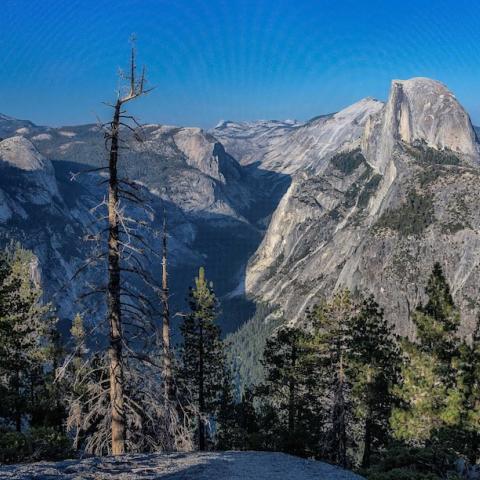
British climber Andy Kirkpatrick and climbing partner Vanessa (pictured) aid climbing on El Capitan, Yosemite NP / Wikipedia - Andy Kirkpatrick
The National Park Service has decided to end a controversial proposal that would have allowed local land managers to allow or forbid the use of fixed climbing bolts and anchors in national parks. The plan had been weighed for two years, drawing intense debate. Last year, the Park Service issued a draft report that set out the process for land managers of designated wilderness areas to consider fixed climbing gear as permanent installations. This would have made placing bolts and anchors illegal in wilderness areas. Further, any gear inadvertently left behind, like a stuck piton would also have been illegal. That in turn would have made serious rock climbing illegal throughout most wilderness areas.
The idea was, seemingly, that fixed climbing gear as a piece of human-made equipment, doesn't belong in a designated wilderness area, and, therefore, local land managers ought to be able to ban them. Climbers argued the bolts are invisible unless you're using one, and are so minimal, relative to the rocky faces they're attached to, as to be completely insignificant.
According to Climbing Magazine, "over 50,000 routes across 28 states would have been impacted by the fixed anchor ban."
Public comments about the NPS plan came flooding in over the past year since the proposal was first introduced by the Park Service. More than 12,000 people wrote in, many of whom worried that they'd be forbidden from climbing cherished routes deep in the backcountry. The The Access Fund, an advocacy group dedicated to advancing the interests of climbers lobbied hard against the proposal.
“When the Wilderness Act was being conceptualized in the 1960s, climbers and mountaineers were out exploring these wild places, and their experiences helped build support for the Wilderness Act,” said Access Fund executive director Chris Winter in a release. “If climbers are no longer welcome in Wilderness, the long and rich history of climbers as vocal advocates for conservation will be undermined. We need an army of people to protect public lands, and it’s critical that climbers remain among those numbers.”
There was support for ending the proposal from wilderness advocates who worried that if land managers were allowed to individually decides the legality or appropriateness of climbing gear on particular routes, that might open the door to more impactful practices on wilderness lands, allowing a breach of the Wilderness Act. For example, that mountain bike advocates may have been able to successfully lobby land managers that riding a bike in a wilderness area should be allowed, if climbing bolts are.
But now with this proposal dead, park superintendents, not local land managers, have final say in allowing permanent climbing gear in wilderness areas.
In 2013, Jonathan Jarvis, then the Director of the National Park Service, put forth Director's Order 41, which essentially made it Park Service policy to allow a small number of anchors in wilderness areas to protect the safety of, and access for, the climbing community. Placing the occasional piece of fixed climbing gear did not “impair the future enjoyment of wilderness or violate the Wilderness Act.,” according to the order.
Back in September, a bipartisan group of 14 Senators and sent letters to Interior Secretary Deb Haaland questioning the need for the policy reform, and asking the Park Service not to consider climbing anchors as permanent installations.
The Forest Service is also considering a similar plan to potentially ban climbing anchors in wilderness areas it manages, but it's unclear whether they'll follow the Park Service's lead on the issue.

 Support Essential Coverage of Essential Places
Support Essential Coverage of Essential Places









